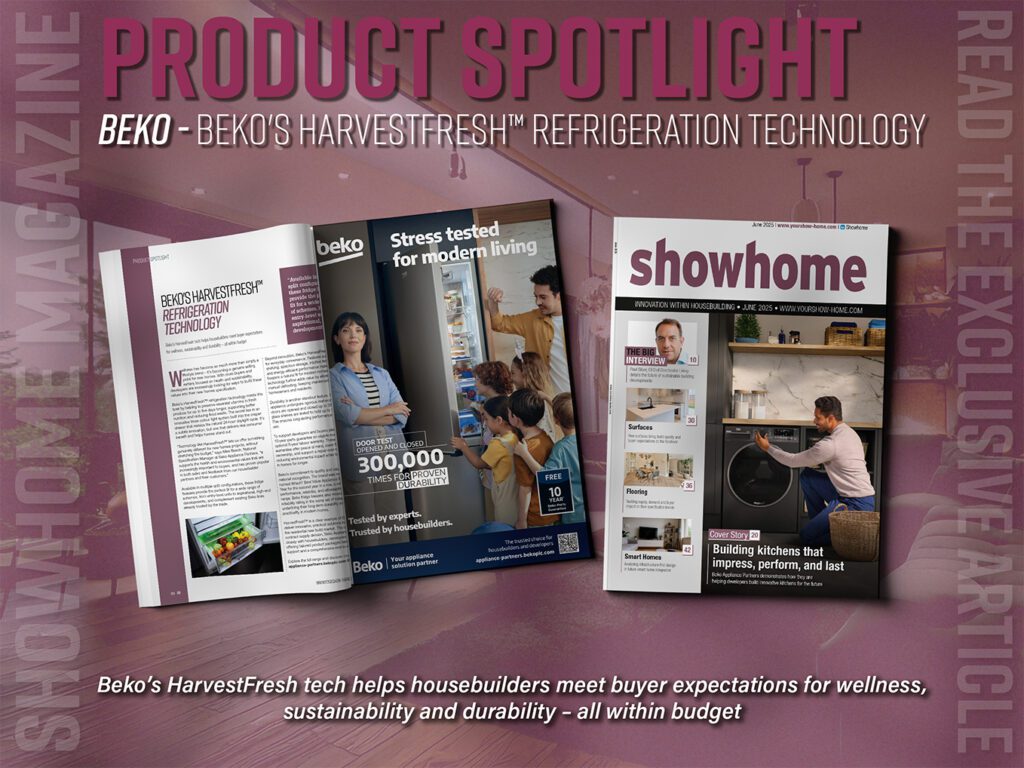The industry is taking leaps in advancement of lighting technology. This article will cover the transition from a switch to smart, wireless and bluetooth lighting
With the world becoming more eco aware, as well as desiring an element of the luxurious, technology is taking a further step into the limelight. Lighting plays an incredibly crucial role in not only functionality in the home, but also relaxation, efficiency and atmosphere. Lighting is no longer just switching on a light to provide illumination in a room, but it is fundamental to the design of a room. Design, both in function and decor provides aesthetic, efficiency and atmosphere. This is where technology in lighting comes in. Lighting technology is primarily thought of as smart technology, however it goes deeper than this, to include energy efficiency, LED light bulbs, Li-Fi and so much more.
Technology is a hot topic in the advancement of the lighting industry. In fact, new lighting technology is making possibly the biggest advancements since the LED bulb first came to the market. It is an exciting time and with the rapid pace of technology changes, it will only become more interesting.
Here are the 3 most recent advancements in lighting technology:
Smart lights
Smart homes are no longer a thing of the future. Smart appliances, mirrors, showers and lights are becoming common in households these days. With smart lights, the bulbs connect to mobile devices or AI such as Alexa or Google Assistant through Bluetooth. Mobile apps are then used to control the smart bulbs. These smart lights can perform a variety of tasks depending on the bulb, including: turn on/off, choose color and brightness, schedule lights to turn on/off or dim, or even flash when you get a social media notification. The demand for these smart light bulbs is increasing due to their energy management, convenience and safety.
One of the biggest trends involved in smart technology is lighting. Some smart lighting systems can follow the daylight and the routine of the people inside the building. If the sun is shining bright, the lights can dim automatically. But when it’s dark outside, the lights turn brighter automatically. Certain rooms can even be implemented with their own routine: brighter lights in the morning can help people to wake up earlier, feel prepared for the day and retain focus, while soft lighting in the evening can help people relax and set an ambiance for watching a film or eating dinner.
Smart technology has even surpassed turning on and off lights with a simple click from a remote device. Instead, press a tab marked “Cooking” on a wall-mounted panel to let all kitchen task lights come up to full brightness while lights in the family room dim so the kids can play video games. Or hit the button marked “Romance,” and the lights throughout the house go out while the lights in the bedroom ebb to a soft glow that turns a sultry blue.
Household technology is undergoing a transformation that’s going to make lighting more integral to our everyday lives. Not only will we see better, but we’re going to use light to alter our moods, protect our well-being, safeguard our houses and save energy.
“Home lighting today is about lifestyle enhancements,” says Paul Nagel, Chief Product Officer at Kinestral Technologies, which develops and manufactures a natural light management system. “We want to know how to control light to create environments we’re comfortable in, and have energy efficiency while we do it.” Today’s progressive lighting schemes aren’t about turning lights on and off; they’re about being partners in your lifestyle. The concept is simple: Imagine all your home’s light fixtures as a single system that can be programmed into a variety of zones. Each zone is dedicated to a particular task or mood, and can be controlled by wall switches, a master wall panel, or a smartphone app.
So in addition to “Cooking” and “Romance” zones, you might have buttons for:
- Outdoor Entertaining – patio and walkway lights illuminate.
- Coming Home – triggered by a timer or a smartphone, the porch, entry hall, and kitchen lights come on.
- Nighty-Night – lights in kids’ rooms slowly fade out as they fall asleep.
- Vacation – lights turn on and off in random patterns.
- Panic Mode – all lights in the house flash on and off.
If walking over to a wall panel is too much effort at the end of a long day, you can call up an app on your smartphone or tablet and control zones that way, all while curled up on the couch. If your app is voice-activated, you won’t even have to swipe a finger. Smart technology is rapidly transforming the way lighting is perceived in the home, and is taking the lead in lighting technology.
LED innovations
Unlike smart lights, LED lights are not a new subject to most. Advancements of LED technology are making way, however, the market is expected to become bigger than ever before. So what’s changing? The Department of Energy is making huge strides towards more efficient and longer lasting LED lights. This is because the Office of Energy Efficiency and Renewable Energy claims that using LED lighting could reduce lighting consumption by half, and even be a solution to climate change. To advance LED lighting technology, manufacturers are working to achieve a warm light with this new advancement, by finding the right color temperature and Color Rendering Index balance. Costs of LED lights are soon expected to fall as LED advances and become more common—making them more affordable to consumers.
There are a number of legislations worldwide which are also attempting to contribute to a more sustainable and greener built environment, one step at a time. For example the banning of halogen light bulbs. The ban on halogen light bulbs takes place in September 2021 in the UK. Halogen bulbs use approximately five times the amount of energy than LED bulbs, so legislation brought in by the Government will aim to slash emissions by 1.26 million tonnes. LED bulbs have a higher initial cost than halogen but the main benefit is that LED bulbs are much more energy efficient than halogens. LED bulbs use up to 90% less electricity compared to halogens. A residuary product from halogens is heat emissions. The heat emissions from halogen bulbs have a negative side-effect to indoor environments as they also heat up. LEDs do not emit any heat and therefore work better as light for indoor environments than halogens. The benefit of LEDs is furthermore their longer life of around 15-20 years compared with two years of a halogen. In the end you will save money on your energy bill, decrease the energy use and your consumption and maintenance cost by switching to LED.
The push to simplify technology and increase both efficiency and practical application has led to a number of fantastic innovations in home lighting. Over the last few years we have seen LED bulbs controlled via Wi-Fi and smartphone apps, giving homeowners instant access to their home lights wherever they had an internet connection. It’s now been taken to a whole new level.
More and more LED bulbs are being combined with all sorts of innovative add-ons making future applications even more versatile. Gone are the days of clunky speaker systems and tons of wires. Now consumers can purchase LED bulbs combined with Bluetooth speakers so that their tunes can be broadcast from any electronic device that has Bluetooth equipped. Up to six of these bulbs can be equipped to connect to the same device giving your living room or outdoor entertaining space incredible surround sound for a fraction of the cost of most home speaker systems.
Internet dragging in your home office? Now LED bulbs have been combined with Wi-Fi enhancers to give your home’s wireless internet a bit of a boost. Some new bulbs have even been equipped with microphones and cameras capable of performing voice and facial recognition to enhance and simplify home security systems.
Plus all of these add-ons are easily controlled via an app on your smartphones. That means no more overabundance of remote controls, wires or equipment cluttering up your living space. It will be amazing to see how creative minds will continue to experiment and develop new innovative uses for LED bulbs. Now more than ever LEDs and specialised LED Bulbs will be under even more heavy duty testing and scrutiny to ensure that the lighting quality is not sacrificed with new additions of hardware and software.
High-Efficiency Ballasts
With technology making life more efficient, High-Efficiency Ballasts are being produced for the same goal. Manufacturers are trying to maximise the energy savings and make ballasts more energy efficient. With new technology advances, high-efficiency ballasts are obtaining these standards in a wide variety of wattages. The result of these updated ballasts will benefit installers and consumers with their ease and affordability.
Lighting technology is a broad subject, but with advancements the market is sure to increase and consumer demand to match. Smart lighting and wireless technology will continue to take the lead as the most accessible and energy efficient technology in the lighting industry for the consumer.
Top tips with Sara Mason-Parker, Sales and Key Account Manager, Green Lighting
Show homes are a vital tool to any development when presenting your houses to potential new buyers. A lot of time and effort goes into showcasing them in the best possible light – which is why it’s imperative to do just that and get the lighting right!
At Green Lighting (GL) we work closely with the UK’s top House Builders. Here’s a brief insight from us as what to consider when illuminating a show home:
Quality not quantity – downlights are the best fitting to brighten every room however scattering these all over the place doesn’t look great. A brighter lumens output is a much more effective solution and means less holes in the ceiling. (Top tip – installing a downlight in each corner of a room will really lighten those dark corners!).
Clever lighting – LED tape can be used above and below kitchen cabinets to provide excellent task light (when chopping that veg!) and can also create a lovely ambience for those date nights at home.
Fit for purpose – ensure the decorative lighting that you select is at a height that works with each room, i.e. surface mounted ceiling lights are best for living spaces and hallways whilst pendants are a striking alternative above kitchen islands or beds. At GL we have a bespoke and cost-effective selection of decorative lighting handpicked specifically for Show Homes.
Full traceability – specification with a lighting supplier ensures simple yet important tasks are taken into consideration, such as making sure that the colour temperature is the same throughout a Show Home. It also provides full traceability should replacements be required and offers the opportunity to upsell.
First impressions count – make sure that what your potential buyers see first (the outside of the Show Home) is on point by installing impressive external lighting such as lanterns with Tri-sensor technology and several bollards lighting up the path.
Commentary: Toshiko Mori, Architect
As the distinction becomes blurred between home life and work life in the new normal, we will need to design for respite and provide ways to draw boundaries around some practices. How the home is connected to the outdoors—to views, light, and air—and offers spaces to recharge will become particularly valued.
In light of the discovery that the virus is airborne, the ability for a residence to smoothly transition from a collective living environment to a cluster of isolated zones becomes essential to stop transmission. New residential designs must include robust air ventilation and filtration strategies to optimise indoor air quality. The need for natural ventilation and sunlight exposure also becomes an important aspect of well-being, as views to the outdoors can provide respite from relentless patterns of online work and learning.
Architects need to invent improved typologies of houses, and housing that better responds to diverse communities of residents and their accompanying cultures and lifestyles. This must include the potential for shared spaces as well as the ability to isolate within the house compound. In addition, there needs to be greater consideration for artificial and natural ventilation and lighting strategies in order to maintain good interior air quality and mental well-being.
Commentary: Rachel Morris, Marketing Manager at 4lite
A house is often made a home thanks to its lighting – it can transform your mood and the ambience of your day. And given how much time we’ve been spending at home lately, it makes sense to make your light work for you.
Whether you need the right lighting for day-to-day activities such as cooking, watching TV or working from home, or if you just want the right mood at the touch of a button, smart and efficient products are enhancing customer’s daily lives.
Our products for example, have been developed with WiZ Connected technology, and we have a relationship with Google which, when paired with smart lighting, helps the customer create a connected eco-system in their home.
Smart technology provides optimum energy efficiency, and intelligent smart features at the touch of a button or on voice command that allow lighting to adapt to your lifestyle. From bedroom lighting that replicates circadian rhythms to smart bulbs that change colour when the doorbell rings or to let you know your pizza is on its way, smart tech can do it all.
Smart lights can make a huge difference to interior and exterior spaces such as adding effects of dimming to create ambience or colour temperature change for wellbeing and circadian rhythm. Additionally, integration allows customers to create a fully connected home with smart door sensors, air purification devices and a smart alarm system which are just some of the huge benefits of switching to smart lighting.
To stay up to date on the latest, trends, innovations, people news and company updates within the UK property and housebuilding market please register to receive our newsletter here.
Media contact
Rebecca Morpeth Spayne,
Editor, Showhome Magazine
Tel: +44 (0) 1622 823 922
Email: [email protected]











